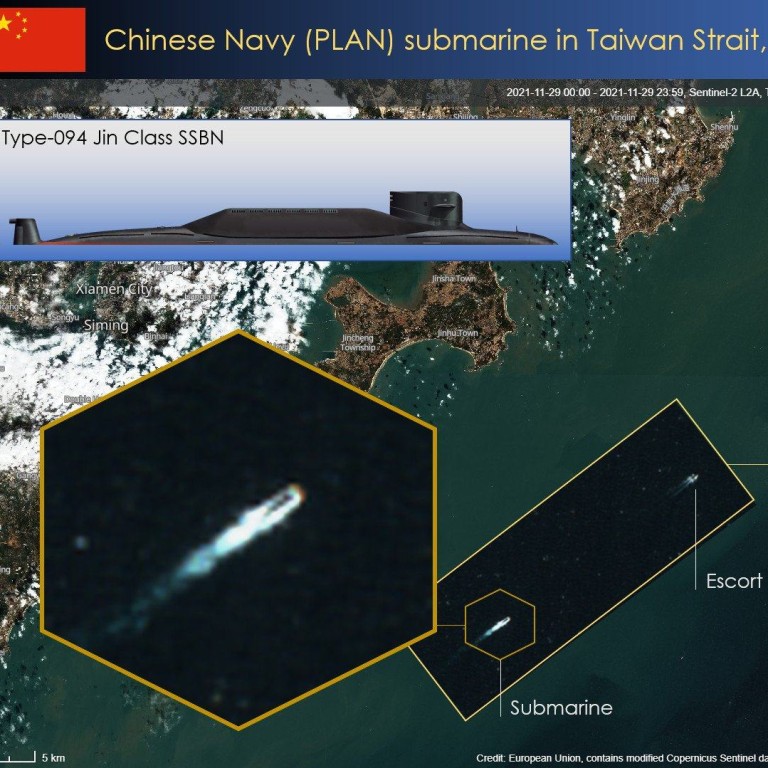
Chinese nuclear submarine spotted sailing on the surface in Taiwan Strait
- Satellite image shows Type 094 heading north from PLA naval base in Yulin, according to US defence analyst
- Rare move could be a signal to the US, or it may have been heading to Bohai Shipyard for repairs, experts say
A Chinese nuclear-powered submarine surfaced in the Taiwan Strait on Monday, a US defence analyst said, citing satellite imagery – a rare move that could be a message for Washington.
“Although Sentinel-2 is low resolution, the wake patterns are characteristic of a submarine with typical rounded bow. The length best fits the Type 094 and the context aligns,” Sutton wrote on his personal website Covert Shores.

“[Weapons carried] by the Type 094 were designed to target the US,” Macau-based military observer Antony Wong Tong noted, adding that “a surfaced transit doesn’t make sense – unless the PLA wants people to see it”.
Also on Monday, a US Navy P-8A anti-submarine patrol aircraft flew over the Taiwan Strait from the Misawa Air Base in Japan, according to the South China Sea Strategic Situation Probing Initiative (SCSPI), a Beijing-based think tank.
It said in a Weibo post that the US aircraft came as close as 30km to Fuzhou, a city in southeast China that is home to a PLA Air Force base from where so-called routine island encirclement patrols are carried out near Taiwan.
China’s army conducts drill near Taiwan Strait after US lawmakers’ visit
Collin Koh, a maritime security analyst with the S. Rajaratnam School of International Studies in Singapore, said the PLA submarine transit “could be construed, rightly or wrongly, as China sending deterrence signals to the US over Taiwan”, adding that it would have been closely monitored by the US military.
It was unusual for a strategic nuclear submarine to surface given that US aircraft and satellites monitor the region, according to Lu Li-shih, a former instructor at Taiwan’s Naval Academy in Kaohsiung.
“It’s possible something happened to the Type 094, forcing it to take a surfaced voyage, which would be both safer and necessary,” Lu said.
Zhou Chenming, a researcher with the Yuan Wang military science and technology institute in Beijing, said the Taiwan Strait – which connects the East and South China seas – had complicated underwater terrain and active oceanic volcanoes and was “not friendly” for submarines. He said they tended to use the Bashi Channel instead when heading south to north, or transited the Miyako Strait when going north to south.
“But passing through the Taiwan Strait would save time for a submarine heading to the Bohai Shipyard for an upgrade or overhaul,” he said.

